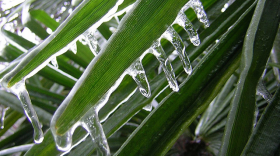During the height of this past summer’s toxic algae bloom, a team of researchers from Florida Gulf Coast University took water samples from the Gulf of Mexico, the Caloosahatchee river and Lake Okeechobee to try and identify a common source of pollution.
The samples were sent to a lab across the country for an isotopic analysis of their nitrogen compounds which FGCU lead researcher Dr. William Mitsch said is "a way of sort of tracing the source of pollution to where its happening."
Mitsch announced the test results during a lecture series discussion last night at the Everglades Wetland Research Park in Naples.
“Take it to the bank," Mitsch said. "Red tide is mostly caused on our coastline by nitrate fertilizer.”
Mitsch said the highest reading for nitrates came from the Caloosahatchee River sample.
The second highest reading came from collected rainwater, which Mitsch said could explain how nitrates end up in the Gulf, where they feed the red tide algae present in the water.
“It could be polluted rainfall that’s causing red tide," Mitsch said. "Or at least accelerating it, or maybe starting it.”
Mitsch said he and his team will continue their research on toxic algae and water quality.








